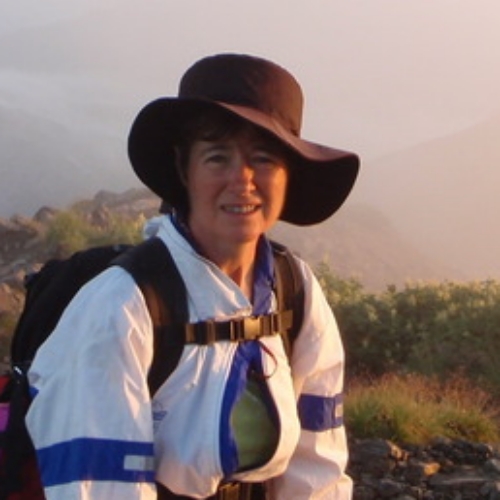Exposure to extremely low frequency fieldsBackgrounder (2007)
Base stations and wireless networksBackgrounder(2005)
Electromagnetic hypersensitivityBackgrounder (2005)
Static electric and magnetic fieldsBackgrounder (2006)
5) Will scientists who are also members of ICNIRP be identified in the COI process?
(As an aside, one prominent researcher on the WHO's International Advisory Council recently remarked in a private conversation, "Do you have any have illusion about WHO and ICNIRP? - See this Q&A on the WHO web. As member of WHO IAC - I don't know who the author is of this incredible information. Who personally is the author?!! I received this info today from WHO: World Health Organization has posted a Q&A (Questions and Answers) on 5G on its corporate website.")
I wish to note from the perspective of the telecommunications companies, the specified limits need to be reasonably simple and intelligible to the engineers designing hardware and carrying out deployments, but RFR is an extremely complex phenomenon, the effects of which depend on many factors aside from frequency and field strength, including modulation, polarization, near field versus far field and the state of the organism exposed to it. Over the course of 50 years, these companies have managed to create a faulty standard based on an oversimplified view of how energy interacts with biology. Attempts to correct this have been made, but one big difficulty reformers face is speaking with a unified authoritative voice, overcoming the vast diversity in academia and in the phenomenon itself. Nevertheless, the fact remains that to protect investments made on the basis of faulty assumptions despite a profuse and continuous chorus of warnings, the authorities continue to suppress information critical to the protection of public health.
The public puts faith in the WHO as the world's foremost authority on health and trusts it to guard human health worldwide, so it is disturbing to see it team up with ICNIRP, a private organization dedicated to promoting industry objectives, to the exclusion of all other views. It has been pointed out that ICNIRP, similarly to "Federal Reserve," is deceptively titled to put private interests forward as official public policy. ICNIRP preemptively took over as the standard setter presumed to represent all interests. Other groups of scientists exist that include medical doctors and public health experts that the WHO could consult, such as EUROPAEM, the Austrian Medical Association and the authors of the Bioinitiative, but instead it bases its advice on the work of experts who are mostly engineers, and insists that the only biological effects observed are due to heating, a view which conflicts with an enormous body of evidence of non-thermal effects, which it simply dismisses. A look at ICNIRP's membership shows it to consist of industry-friendly scientists and lobbyists. They have proactively established standards for EMF exposures favorable to industry, declaring any evidence of effects that would necessitate stricter standards to be "unconfirmed."
The forerunner to ICNIRP was the International Radiation Protection Association-International Non-ionizing Radiation Committee (IRPA-INIRC), established about 50 years after the International Commission on Radiation Protection (ICRP, which focuses on the nuclear industry) to deal with non-ionizing radiation, including RFR, that was becoming a nuisance in people's living and working environments. That was disbanded by its final director, Michael Repacholi, who organized ICNIRP in 1992. He, more than anyone else, has been criticized for the turn the ICNIRP took away from sound science toward PR service to the telecoms. His educational background looks promising with physics and biology, but his 1998 curriculum vitae shows all his research grants in the 1990s to have come strictly from electricity and telecom research concerns.
At roughly the same time, a lot of other shady undertakings were underway internationally. For example, jurisdiction over RFR standard setting in the US was transferred from the EPA and FDA to the FCC, essentially putting the fox in charge of the hen house, and the Telecommunications Act of 1996 gave so much power to telecom concerns, depriving communities of the right to refuse the siting of potentially harmful infrastructure on the basis of environmental concerns, that its legality has been questioned. At the same time, in Japan, jurisdiction over RFR-related health matters was transferred from the Environment Agency to Japan's version of the FCC, currently the Ministry of Internal Affairs and Communications, where it remains to this day.
In November 2019, Microwave News published a critique of ICNIRP and its relationship to the WHO, titled "Will WHO Kick Its ICNIRP Habit?" It contains a lot of information substantiating what the author has written here.
It is even more disturbing that the WHO ignores evidence of a causal relationship for electromagnetic hypersensitivity (an "allergy" to RFR and other non-ionizing radiation affecting a significant minority of the public) by exposure to non-thermal levels of non-ionizing radiation that its own former director-general, Dr. Gro Harlem Brundtland, suffered from herself, and took steps to document.
Around the world evidence is building of harmful effects of wireless technology on human health and the environment. With the advent of 5G, the scale of these effects has approached the disastrous. Now, with COVID-19 being declared a global pandemic by the very same WHO, prominent experts on the biological effects of exposure to non-ionizing radiation have broken their cautious silence and indicated 5G an accelerant to the spread of the disease.
It is imperative that all scientists' views on non-ionizing radiation be considered and that new protective standards be set in a transparent, publicly open manner.
(Note: You can view every article as one long page if you sign up as an Advocate Member, or higher).





